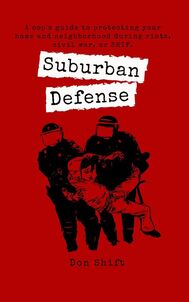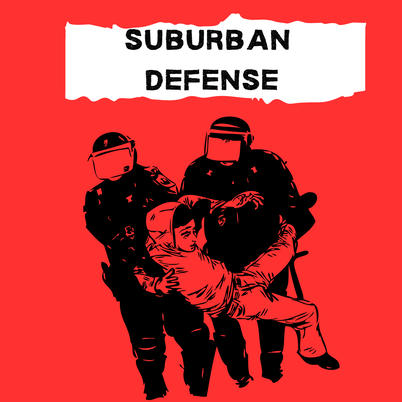
America has entered a time when civil disturbances, unrest, and mobs threaten near-anarchy on the streets of suburbia as police are unwilling or unable to protect citizens from rioters. Our nation has entered a time where it is divided in a way we haven’t seen since 1861. We are on the verge of a civil war. This book isn’t to convince you we are at that point or how we got there; this book is to give you ideas on how to protect yourself, your home, and your neighborhood when evil threatens and the police cannot protect you.
Many prepper and survivalist manuals give up suburbia as lost, focusing on rural communities. Not all of us are fortunate to have self-sufficient homesteads in the country, but are trapped in suburbia. What does an urbanite do when SHTF comes to the suburbs?
This book is how average people, with no military or law enforcement skills, who haven’t been steeping themselves in the prepper/patriot movement for years can defend a modern American suburban neighborhood. Military and police tactics have been adapted for realistic scenarios that civilians might face. If you want to stay safe and protect yourself and your neighborhood from people seemingly bent on destroying the country for destruction’s sake, this is your guide.
Many prepper and survivalist manuals give up suburbia as lost, focusing on rural communities. Not all of us are fortunate to have self-sufficient homesteads in the country, but are trapped in suburbia. What does an urbanite do when SHTF comes to the suburbs?
This book is how average people, with no military or law enforcement skills, who haven’t been steeping themselves in the prepper/patriot movement for years can defend a modern American suburban neighborhood. Military and police tactics have been adapted for realistic scenarios that civilians might face. If you want to stay safe and protect yourself and your neighborhood from people seemingly bent on destroying the country for destruction’s sake, this is your guide.
